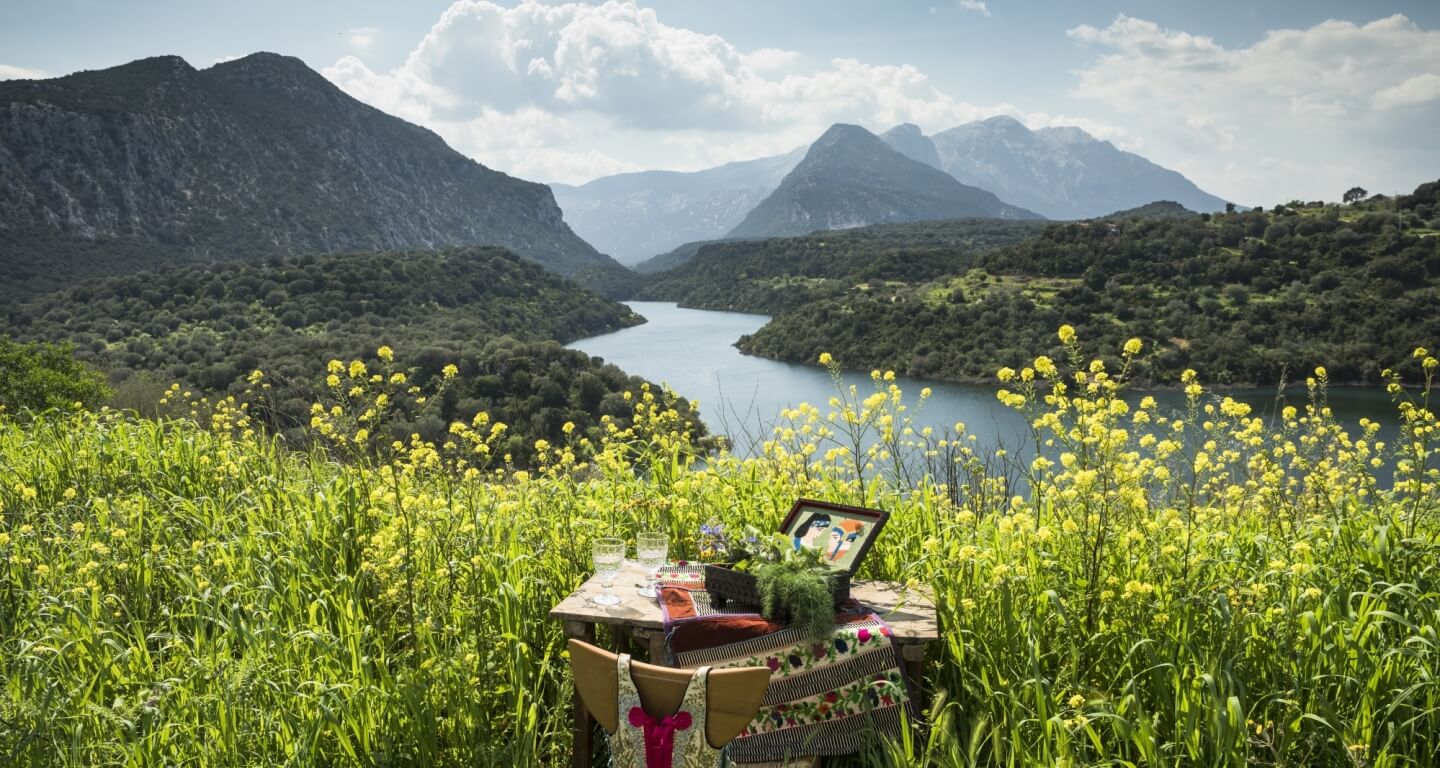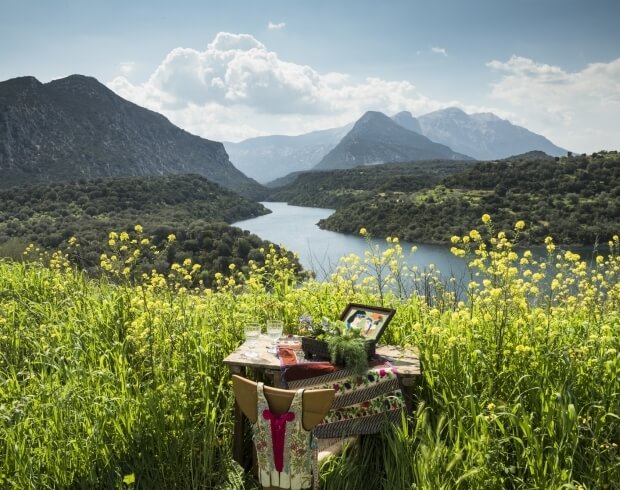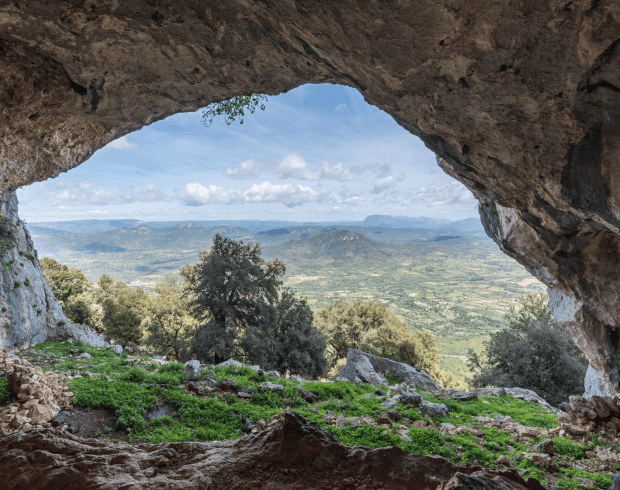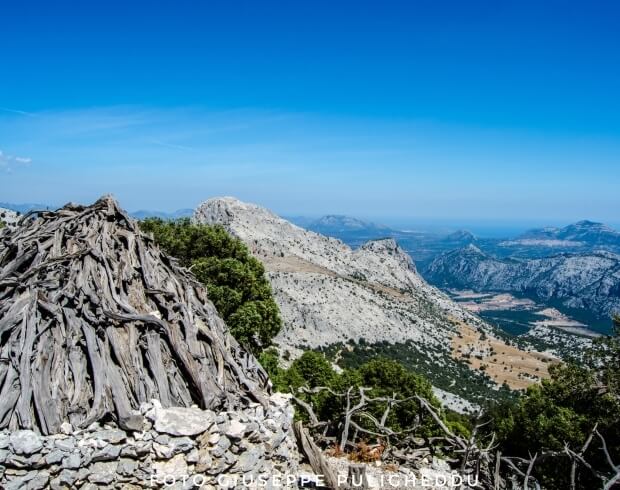Between heaven and earth, sea and mountain
The sea
The sea of Sardinia is among the best in the world. Hard to believe? Just visit Cala Cartoe, in the Orosei Gulf, and you’ll be blown away: you will find the finest sand, water reflecting unmistakeable green and pale blue hues, cliffs adorned with dense vegetation, dotted with Scotch brooms entailing a wild beauty.
Alternatively, make a trip to Cala Gonone: here, in addition to white sands and mesmerising sea colours, you can visit the sublime Dugong Cave, a triumph of spectacular dripstones and icicles as ancient as the earth. Visiting the centre-eastern coast means, however, being met with a never-ending sequence of stunning beaches: Cala Goloritzé, Cala Luna, Cala Sisine, Cala Mariolu and many more. Further to the north, a little over forty miles from the hotel, we strongly recommend you visit San Teodoro and its lagoon, a paradise for bird watching, where you will also find pink flamingos. Its coastline, an enchanting gem on the Tyrrhenian Sea, is a protected marine area, entailing fascinating diving spots.
Ancient hamlets
Taking a stroll in the quaint historic centre of Oliena (about 4 miles from Su Gologone), amid cobblestone streets and ancient houses, you will easily meet elderly ladies who still wear the su hustumene, the traditional garb. Dorgali is fervent with tourism and craftsmanship: do pay a visit to the leather ateliers and the goldsmiths workshops, famous for manufacturing filigree. Set a little over one mile from the sea, Orosei is a charming village (20 miles from Su Gologone) characterised by pure white sand beaches, surrounded by pine groves, Mediterranean forests and pink granite and basalt cliffs. Its attractive historic centre features ancient houses and its churches are decorated with antique wooden statues. Country festivals should not go amiss. Grazia Deledda, who won a Nobel Prize for Literature in 1926, set her most famous novel, Reeds in the Wind, among the streets of Galtellì (16 miles from the hotel). The Literary Park is set along the characteristic and well-kept historic centre, around the places which inspired the writer. 15 miles from the hotel, in a mountainous area defined by a wild landscape, Orgosolo is famous for its murals: 150 paintings enriching the streets of this village, telling the story and the peculiar identity of its inhabitants. Traditions take centre stage here. During the many country festival, the locals wear folk costumes, accomplished by local seamstresses, with brocades, floral decoration and silk threads from silk worms, who are still farmed here from time immemorial.
Archeology
The Serra Orrios complex, the Sedda ‘e sos Carros site, dedicated to the cult of water, the hamlet of Tiscali, hidden inside a cave in the rugged mountains between Oliena and Orgosolo, the Corbeddu cave, where the pristine skeleton of a 5,000-year old Queen was found: this is a land which bears witness to the people who lived here, chiefly the extraordinary saga of the Nuragic era (1,800 – 600 BC)
Nature
In the Dorgali countryside, Inspinigoli is a deep cavern reaching the centre of the earth thanks to a 280-steps stairway, featuring a 40-metre high limestone column. Legend has it that this is where virgins were sacrificed: the echo coming from the bottom is in fact akin to a female lament. The sound effect you can hear inside a cave in the Oliena territory, aptly called Sa Oche ‘e su Entu (The voice of the Wind), is indeed noteworthy. Between Oliena and Urzulei, Su Gorropu is the biggest canyon in Europe: the Flumineddu river runs through it, among walls reaching the height of 500 metres (1,640 feet). Simply umissable.
Culture
The country seat of Barbagia, Nuoro was called the “Athens of Sardinia” because of the many intellectuals (poets, writers, sculptors, musicians and legal experts) who livened it up, wanting to promote the redemption of the island after centuries of colonial subordination. The Archaeological Museum hosts precious artefacts from the prehistory of the land. The outstanding Ethnographic Museum presents the story, the traditions and the folk costumes of the entire island. The MAN (Museum of Art of the Nuoro Province) hosts works by Sardinian artists and important international exhibitions. You will also find pictures by the main Sardinian painters in the Tribu Museum, together with a whole floor entirely dedicated to the works of Francesco Ciusa, the most important Sardinian artist of the Novecento. Its birthplace is right in the historic centre, opposite the San Carlo church, where his tomb is kept, featuring a copy of his most famous work on top, the Madre dell’ucciso (The Mother of the Murdered), which triumphed at the 1907 Venice Biennale. A few steps away from it you will find the birthplace of Grazia Deledda, a treasure hove of a museum; the house of the lawyer Gianpietro Chironi, recently restored and ready to host the Regional Pottery Museum; the square dedicated to the poet Sebastiano Satta, carried out by the sculptor Costantino Nivola (the fascinating museum dedicated to him in his home town, Orani, is well worth a visit). Last but not least, the Solitude Church, with its superb bronze gate, executed by Eugenio Tavolara, houses the remains of Grazia Deledda, kept in a sarcophagus. The latter is set at the beginning of the rise towards Monte Ortobene: you may reach its top via car, as well, and the vista on the Oliena valley, the Orgosolo Supramonte and the Gennargentu is simply magnificent. On the eastern side, the big statue of Our Saviour protects the city of Nuoro below. A festival is dedicated to Our Saviour on the last Sunday in August; this is one of the most important celebrations on the island, with men and women walking in procession as far as the top of the mountains, wearing traditional costumes.






